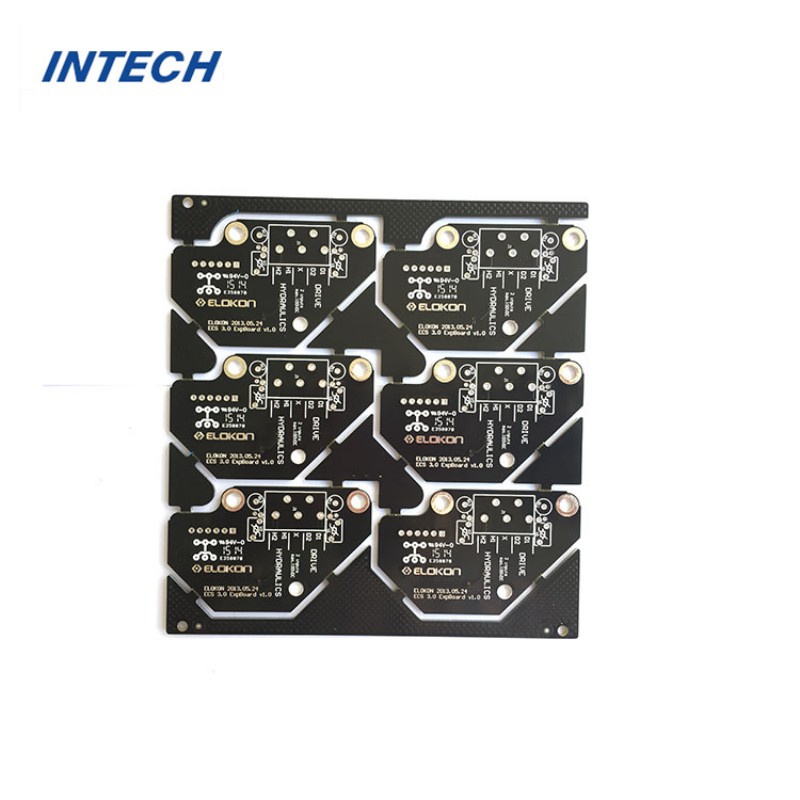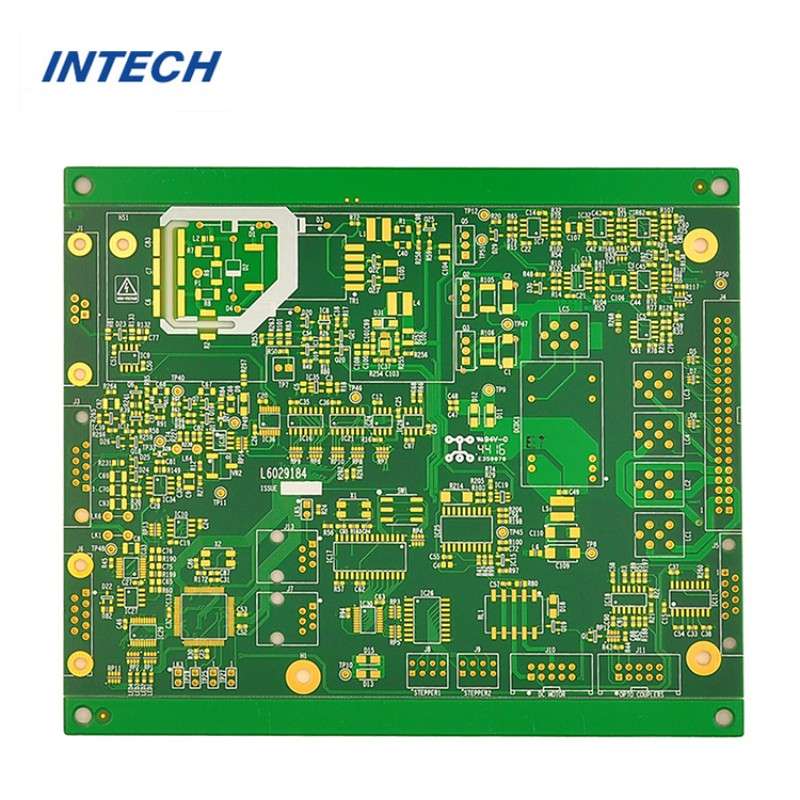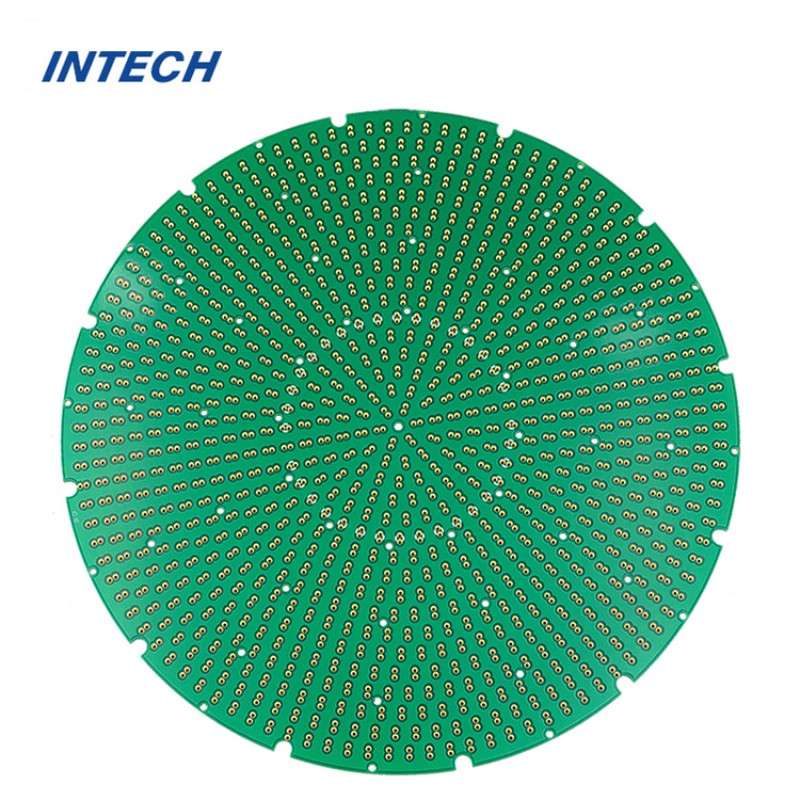What Makes Custom Rigid PCBs Different from Standard PCBs?
Date:2025-02-13 17:03:21
In the world of electronics, the quality and design of printed circuit boards (PCBs) play a crucial role in the functionality and reliability of electronic devices. While standard PCBs serve general-purpose applications, custom rigid PCBs offer a higher level of customization and performance for specific needs. This article will explore what makes custom rigid PCBs different from standard ones and how rigid PCB OEM (Original Equipment Manufacturer), rigid PCB ODM (Original Design Manufacturer), and rigid PCB customization elevate design possibilities.

What Are Standard PCBs?
A standard PCB is a printed circuit board made from pre-determined, off-the-shelf designs and materials that are suitable for a wide range of electronic devices. These PCBs are mass-produced, typically in simple shapes and sizes, and cater to general consumer and industrial applications. They are often designed to be cost-effective and efficient for high-volume production.While standard PCBs work well for common electronic products like smartphones, calculators, and other everyday devices, they do not always meet the specific requirements of specialized projects. This is where custom rigid PCBs come in.
What Are Custom Rigid PCBs?
Custom rigid PCBs, as the name suggests, are printed circuit boards that are tailored to meet the unique needs of specific electronic devices. These PCBs are designed to accommodate special shapes, sizes, materials, or technical specifications that a standard PCB cannot provide. Customization in rigid PCBs involves everything from the design layout to the manufacturing process itself, resulting in a board optimized for the intended application.
When companies require high performance, precision, or adaptability, they turn to rigid PCB OEM and rigid PCB ODM solutions to create a PCB that meets their unique needs. But how do custom rigid PCBs stand apart from standard ones?

Key Differences Between Custom Rigid PCBs and Standard PCBs
1. Tailored Design and Functionality
The most obvious difference is that custom rigid PCBs are specifically designed for a particular application. Rigid PCB customization allows for alterations in the design layout, thickness, number of layers, and even the materials used. For example, a custom PCB may have added features like flex points, specialized routing for power or signal, or unique geometric shapes to fit in constrained spaces.
In contrast, standard PCBs follow a one-size-fits-all approach. They are manufactured with a predefined design and cannot be altered to meet specific customer requirements. This limits their ability to support advanced features or meet strict design constraints.
2. Higher Precision and Performance
Custom rigid PCBs are engineered with a focus on performance and precision. When companies work with rigid PCB OEM or rigid PCB ODM providers, they can ensure that the PCB meets exact specifications such as signal integrity, heat dissipation, and current handling. This is particularly crucial in industries like aerospace, medical devices, automotive, and high-speed electronics, where the slightest deviation from the design can result in malfunction or failure.
Standard PCBs, while functional, often have limited performance capabilities compared to customized ones. The mass production process typically leads to compromises in material quality and component placement, which can impact performance, especially in high-demand applications.
3. Material Selection
One of the significant advantages of custom rigid PCBs is the ability to select materials that are ideal for the specific operating environment. Rigid PCB customization allows manufacturers to choose from a wide range of materials, including advanced substrates that offer better heat resistance, higher dielectric strength, or improved signal integrity.
Standard PCBs, on the other hand, are usually made from general-purpose materials that work well in everyday applications but may not perform optimally in specialized conditions. For instance, if a device operates in extreme temperatures or needs to support high-frequency signals, custom materials may be necessary, which standard PCBs cannot provide.
4. Size and Shape Flexibility
Custom rigid PCBs offer unmatched flexibility in terms of size and shape. A rigid PCB can be customized to fit into a specific enclosure or to accommodate unique component layouts. Rigid PCB ODM (Original Design Manufacturer) solutions provide the freedom to design a PCB that fits complex geometries or tight spaces, which is essential in industries like wearables or compact consumer electronics.
Standard PCBs are typically limited to standard sizes and shapes, making them unsuitable for applications where space is limited or irregularly shaped components are needed.
5. Low-Volume Production
Custom rigid PCBs are often manufactured in lower quantities, which allows businesses to develop prototypes or limited runs without committing to large-scale production. This is particularly valuable in research and development phases, where companies need to test the functionality of a device before mass production. With rigid PCB OEM services, businesses can order small batches of custom boards and make adjustments based on real-world performance.
In contrast, standard PCBs are designed for high-volume production. While they are more affordable for large-scale manufacturing, they are not well-suited for prototypes or smaller production runs.

Custom rigid PCBs can integrate advanced technologies such as multi-layer stacking, fine-pitch components, high-density interconnects (HDI), and embedded components. This makes them suitable for high-tech applications, like medical devices, automotive electronics, and telecommunications equipment, where complex functionalities are required.Standard PCBs generally have simpler designs and fewer features, limiting their use in cutting-edge or highly specialized applications.
Why Choose Rigid PCB OEM and ODM Services?
When opting for rigid PCB OEM or rigid PCB ODM services, businesses benefit from working with experts who understand the intricacies of PCB design and manufacturing. These services offer tailored solutions that ensure the PCB will meet all technical, performance, and environmental requirements.By collaborating with an OEM or ODM provider, companies can create customized rigid PCBs that deliver superior quality, functionality, and reliability. These boards are designed and produced according to the customer’s precise specifications, from material selection to final testing.
The primary difference between custom rigid PCBs and standard PCBs lies in the level of customization and performance they offer. Rigid PCB customization enables businesses to create boards that are specifically designed to meet the demands of their unique applications. Whether you’re working with rigid PCB OEM or rigid PCB ODM services, custom rigid PCBs ensure your project receives the right design, materials, and performance needed to succeed in competitive and high-tech industries.
For businesses looking to push the boundaries of innovation, custom rigid PCBs are the key to achieving optimized and reliable electronic systems.
